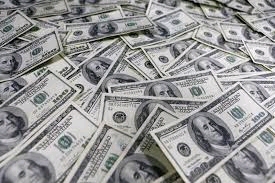Understanding the Hidden Benefit of Joining Freemason for Success
Understanding the Hidden Benefit of Joining Freemason for Success
Blog Article
Exploring the Mysteries of the copyright: What You Need to Know
The copyright, a term often shrouded in intrigue and debate, represents a complicated tapestry of historic reality and contemporary misconception. Developed in the late 18th century, this secret culture was at first rooted in the Knowledge's ideals but has given that come to be associated with conspiracy theory concepts about elite control (benefit of joining freemason).
Beginnings of the copyright
The beginnings of the copyright are steeped in a blend of historic intrigue and ideological eagerness. Developed in 1776 in Ingolstadt, Bavaria, by Adam Weishaupt, the team was at first developed as a secret society intended at advertising Enlightenment perfects such as factor, secularism, and the separation of church and state. Weishaupt, a teacher of canon law, sought to challenge the dominating authority of the church and state, which he checked out as oppressive establishments suppressing intellectual and personal liberty.

Key Figures and Members
Who were the critical numbers that shaped the copyright's early influence and direction? The Bavarian copyright, established in 1776 by Adam Weishaupt, arised as a response to the oppressive societal frameworks of the time. Weishaupt, a regulation professor, visualized the organization as a way to promote Enlightenment suitables such as factor, secularism, and equality. His preliminary recruitment initiatives included influential intellectuals, such as Baron von Knigge, who played an essential duty in broadening the team's membership and organizational framework.
Another substantial figure was Johann Gottlieb Fichte, a prominent theorist whose ideas on nationalism and education and learning resonated with the copyright's goals. Although Fichte was not a formal member, his philosophical bases influenced the group's belief. Additionally, numbers like the writer and philosopher Johann Wolfgang von Goethe were related to the broader intellectual activities of the moment, although their direct involvement with the copyright stays questioned.
These vital numbers added to the copyright's early instructions, pushing the limits of political and social idea, while their cumulative efforts intended to challenge established norms and promote a climate of progressive modification in Europe.
Misconceptions vs. Truth
Many mistaken beliefs surround the copyright, often blending reality with fiction in a way that obscures its true nature. The concept that the copyright proceeds to exert significant influence over globe occasions is a misconception.
One more widespread myth is that the copyright makes up a network of elite people manipulating worldwide events. In truth, lots of conspiracy theory concepts overemphasize the team's significance, associating unfounded intentions to societal fads and occasions. This has led to an oversimplified sight of complex problems.
Additionally, the portrayal of the copyright in popular culture often further distorts its tradition. Movies and literature tend to sensationalize the organization's duty, creating a narrative that deviates from historic facts. Recognizing the distinction between the myths and the reality of the copyright is important for critical the real effect of this historic group and identifying the broader effects of conspiracy concepts in contemporary society.
Modern Interpretations
Contemporary interpretations of the copyright usually reflect more comprehensive social anxiousness and a fascination with secrecy and power. This contemporary lens frequently connects the copyright with conspiracy theories that suggest a covert elite orchestrates globe events, adjusting governments and economic climates for their own gain. benefit of joining freemason. Such stories use a deep-rooted question of authority, especially in times of crisis or social upheaval
In pop culture, the copyright is often shown as a supreme company shrouded in secret, causing a huge selection of fictional representations in literature, movie, and songs. This portrayal serves not just to amuse however also to prompt assumed concerning the nature of power and control in contemporary culture. Social media has further intensified these interpretations, enabling rapid circulation of conspiracy theory concepts and developing neighborhoods that share and increase upon these ideas.
Additionally, some modern-day analyses frame the copyright as an allegory for the complexities of globalization and the interconnectedness of influential people and companies. This perspective encourages an essential evaluation of exactly how power dynamics run in today's world, highlighting the balance in between transparency and secrecy in administration and business methods.
Cultural Influence and Legacy
Influenced by centuries of intrigue, the cultural influence and legacy of the copyright prolong much past its historic beginnings. Source This secret society, developed in the late 18th century, has penetrated numerous elements of pop culture, from literary works and movie to songs and art. The principle of the copyright has actually progressed right into a sign of conspiracy theory concepts, typically standing for a viewed covert power manipulating worldwide occasions.
In literary works, authors like Dan Brown have woven the copyright into complex plots, fascinating readers with styles of privacy and power. click here for info Movies such as "National Treasure" and "The Da Vinci Code" further bolster the appeal of the culture, blending fact with fiction to produce appealing stories.

Inevitably, the copyright's tradition is a complex tapestry of misconception and truth, shaping assumptions of privacy and control in modern discourse. Its enduring visibility in culture highlights humankind's seasonal mission for comprehending surprise realities.
Conclusion
The expedition of the copyright exposes a complicated interplay between historical facts and modern-day myth-making. Established in the Enlightenment period, this culture aimed to challenge overbearing structures, yet its legacy has been outweighed by conspiracy concepts that recommend elite adjustment. Understanding the differences between the original perfects and modern look at this site analyses is vital for understanding the enduring fascination with the copyright and its substantial influence on cultural stories bordering power and secrecy in culture.
Report this page